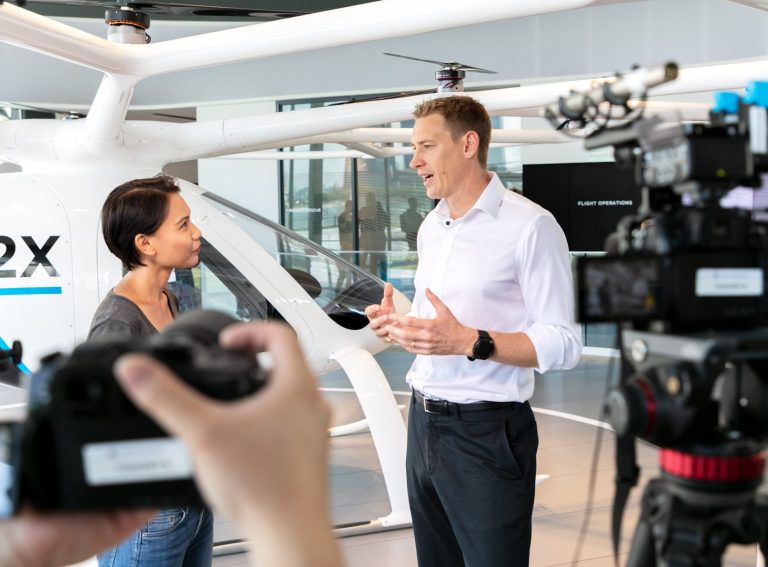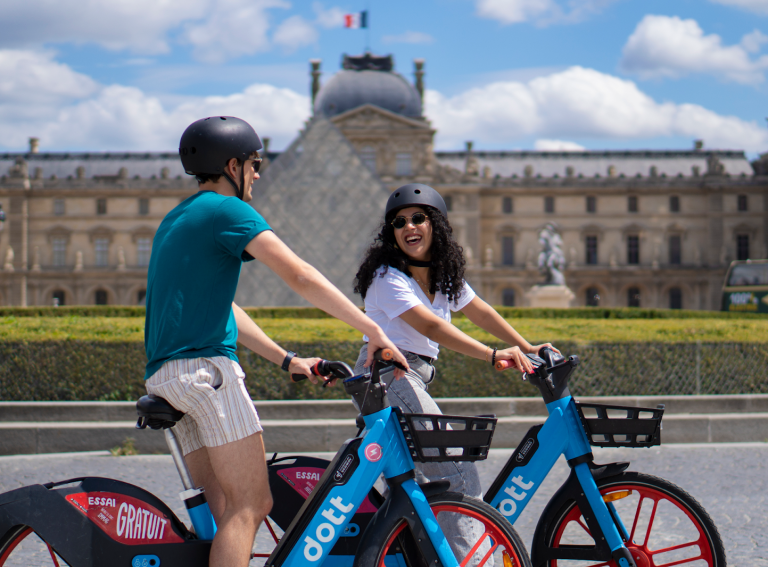Mobility as a Service (MaaS) is transforming transportation on the Greek island of Astypalea, setting an example for other islands and cities around the world.
In collaboration with the Hellenic Republic, Volkswagen Group has launched two new services – AstyGo and AstyBus – enabling residents and tourists to seamlessly choose between on-demand and shared mobility options.
AstyGo is the multimodal vehicle sharing service that offers electric bikes, electric cars, and electric scooters. AstyBus is an on-demand ride-sharing service that has replaced the island’s traditional bus lines. Each bus has a capacity of four passengers, and the island sees between three and seven minibuses operate depending on the time of day.
Today, 25% of the island’s inhabitants regularly use the AstyBus ridesharing service. In just 12 months, it has completed more than 200,000 customer kilometres.
The two new services are offered under the umbrella of the AstyMove app.
Oliver Grimm is the Chief Commercial Officer of Volkswagen Group’s digital software company Seat:Code, responsible for the development of the in-house digital products.
He tells Zag Daily: “Before, the island was full of privately owned vehicles. There were some rental car companies mainly focusing on tourists, but nothing like what we’ve implemented.
“Today, this has changed because now they are not only able to have this on demand transport, but they can also share vehicles. It’s really become part of the public transport infrastructure.”
The move to electric is important both for the island and the country as a whole as Greece has one of the oldest car fleets in Europe, with an average age of almost 17 years.
The MaaS project on Astypalea began in 2020, and benefits from the island being 100% autonomous in terms of energy supply. Astypalea’s small size and sparse population density do not immediately evoke ideas of successful implementation for MaaS, but there is always a flow of tourists that need to get around.
Seat:Code provides the software infrastructure to manage the measurability landscape on the island, through its mobility platform Giravolta.
“It wasn’t as plug-and-play as we initially expected. One key lesson is that solutions often require a high level of customisation based on local circumstances.
“What we provided was flexibility from the software side, leveraging our expertise as a software company. We could adapt quickly to the unique needs of the early republic while running on an existing platform.”
The application has been in place since summer of 2022.
Spreading the word about the new app was easy, says Grimm. “The island can only be accessed by plane or ferry, so those entry points are quite focused communication channels. There was a lot of on-site marketing done to raise awareness for people coming on or off the island.”
Building up the charging infrastructure
Grimm reflects on his first time visiting Astypalea and how it has changed since.
“When I first arrived, I saw a father on a typical gas-powered motorcycle transporting his two young children – all without helmets. Three years later, there is quite a contrast. There are super modern electric vehicles moving people around with everything controlled via an application.
“The biggest change is the transformation of the entire island’s energy supply, and the impact will only grow in the coming years. It was completely operated by diesel engines.
“Part of our ambition is to replace this by using renewable energies, mainly solar panels. The goal isn’t just to have 100% sustainable mobility but to also make a large part of the island’s energy supply renewable.”
The change also brings another benefit – building up the island’s charging infrastructure. When the initiative began, there were exactly zero electric vehicles in Astypalea. Today, there are approximately 80 privately owned electric cars, 10 public chargers with 20 charge points, and 18 private charging stations.
“By percentage, we can see how it ramps up very rapidly. The transition we will see in Europe or the US over the next few years can happen much faster in Astypalea.”
Inspiring more MaaS
From the beginning, Volkswagen knew they wanted this venture to stand as a lighthouse project which inspires others.
While other islands were a clear entry point for future projects, Grimm explains that they’ve received interest from some unexpected local governments.
“From the start, we’ve been in touch with different islands who approached us with similar initiatives, but we’ve also seen that the approach isn’t unique to islands.
“We have deployed a very similar project in rural Germany. We’re excited to explore the implementation of MaaS projects in these low density areas which are often forgotten when it comes to public transport infrastructure.”
As the ripple effects of this innovative project continues to spread, the numbers speak for themselves. In a scientific study as part of the project’s implementation, 80% of users reported a positive view of the new e-mobility services, demonstrating the transformative impact MaaS can have.





